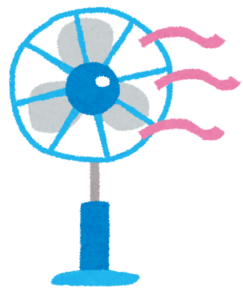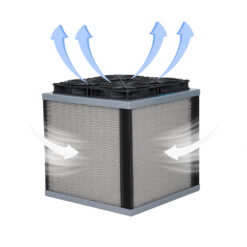The air purifier industry is filled with many misleading and deceptive practices that many customers are unfamiliar of. In this article, we look into some things that air purifier manufacturers don’t want you to know, so you can learn and better use this information to choose the right air purifier that meets your needs.
1. CADR (Clean Air Delivery Rate) is far more important than room coverage
The CADR (Clean Air Delivery Rate) of a room air purifier is by far the most important metric when comparing different products side by side. While not perfect, the CADR tells you how powerful a room air purifier is at cleaning the room.
The problem with room coverage is that different manufacturers use different yardsticks to determine the recommended room coverage for an air purifier. Some may base their room coverage on 1 ACH (air changes per Hour), which is very low by today’s standards, or slightly higher at 2 – 3 ACH, which also isn’t any better. Hence, room coverage is an unreliable metric and shouldn’t be used for comparison.
If you know the CADR, you will be able to know how much clean air you are getting per dollar paid. This can be calculated by dividing the CADR by the price of the appliance.
For example, the AirFanta 3Pro’s CADR at top speed is 702 m³/h, and it retails for S$195. Dividing the CADR by the suggested retail price gives us 3.60 m³/h of clean air per Singapore dollar.
Instead of looking at the overall price or appearance of the product, you should try to aim to get the most clean air per Singapore dollar out of your air purifier. This will ensure you aren’t overpaying for an under-powered, inferior product.
2. Don’t take the CADR, noise level, and energy usage metrics at face value

Almost all room air purifiers in the market have multiple speed settings. While having multiple speed settings isn’t a problem by itself, the issue is that most air purifier companies only list the CADR at the highest setting, the noise level at the lowest setting, and energy consumption at the lowest setting. This may give some customers unaware of how air purifiers work a misleading impression that their product works better than others.
When you set a room air purifier to its highest speed setting, it provides the highest air cleaning performance, but it could also turn very loud as the fan has to run faster. Whereas at the lowest speed setting, the air cleaning performance is at its weakest which may not be ideal or very effective, though it will be barely audible.
Thus, you should not take the metrics provided at face value, especially if only one value is provided for the CADR, noise level, and energy consumption. Always assume that the CADR provided is the CADR at the highest setting as it is industry practice to list it that way, and ask the manufacturer for test reports and data.
3. CADR matters more than filter grade
Many customers have the impression that a filter with a higher grade is much more efficient than a filter with a lower grade, however that is not true.
What matters more than the filter type is the CADR of the air purifier, because the CADR is derived from the volume of air that is cleaned after taking into account air flow, filtration efficacy, and pressure drop.
Imagine if a recipe book told you that you need 3 eggs, 2 teaspoons of sugar, and whipped cream… but the recipe instructions and name of the food you’re making are completely left out. This is the exact same problem when you rely just on the filter grade and/or air flow of an air purifier without knowing what the CADR is.
That is why you should prioritize evaluating the CADR over the filter grade.
Learn more about the downsides of higher grade filters here.
4. Air flow is not the same as CADR

Some air purifier companies may list the air flow of their air purifier to give the impression that it is very effective at cleaning the air, however air flow is not the same as CADR, and you should ignore the metric completely.
The reason is because the air flow of an air purifier is determined by the volume of air that only passes through the fan. It does not take into account the volume of air that passes through the filter.
If you spot a product listing that only mentions air flow and not CADR, that is a huge red flag and you should stay away from it.
5. Not all CADR are the same
The CADR that is listed by each manufacturer is not measured the same way across all manufacturers.
Some air purifiers are tested according to standards in different countries, which could lead to differences in the way the CADR was measured. However, the difference should not be more than 5% between different standards.
Conclusion
The most important metrics, such as CADR, noise level, and energy consumption are usually hidden beneath sleek promotional material and marketing jargon. Get straight to those metrics to find a room air purifier that is high performance, cost effective, energy efficient, and quiet.
The next step would be to find out how whether your room air purifier is powerful enough to provide at least 6 ACH (air changes per hour), in line with NEA recommendations for sizing of air purifiers.
We recommend the AirFanta 3Pro as one such option, and we have all the data that proves it is the best cost-performance air purifier in Singapore. Learn more about it here.
Room Air Purifier



